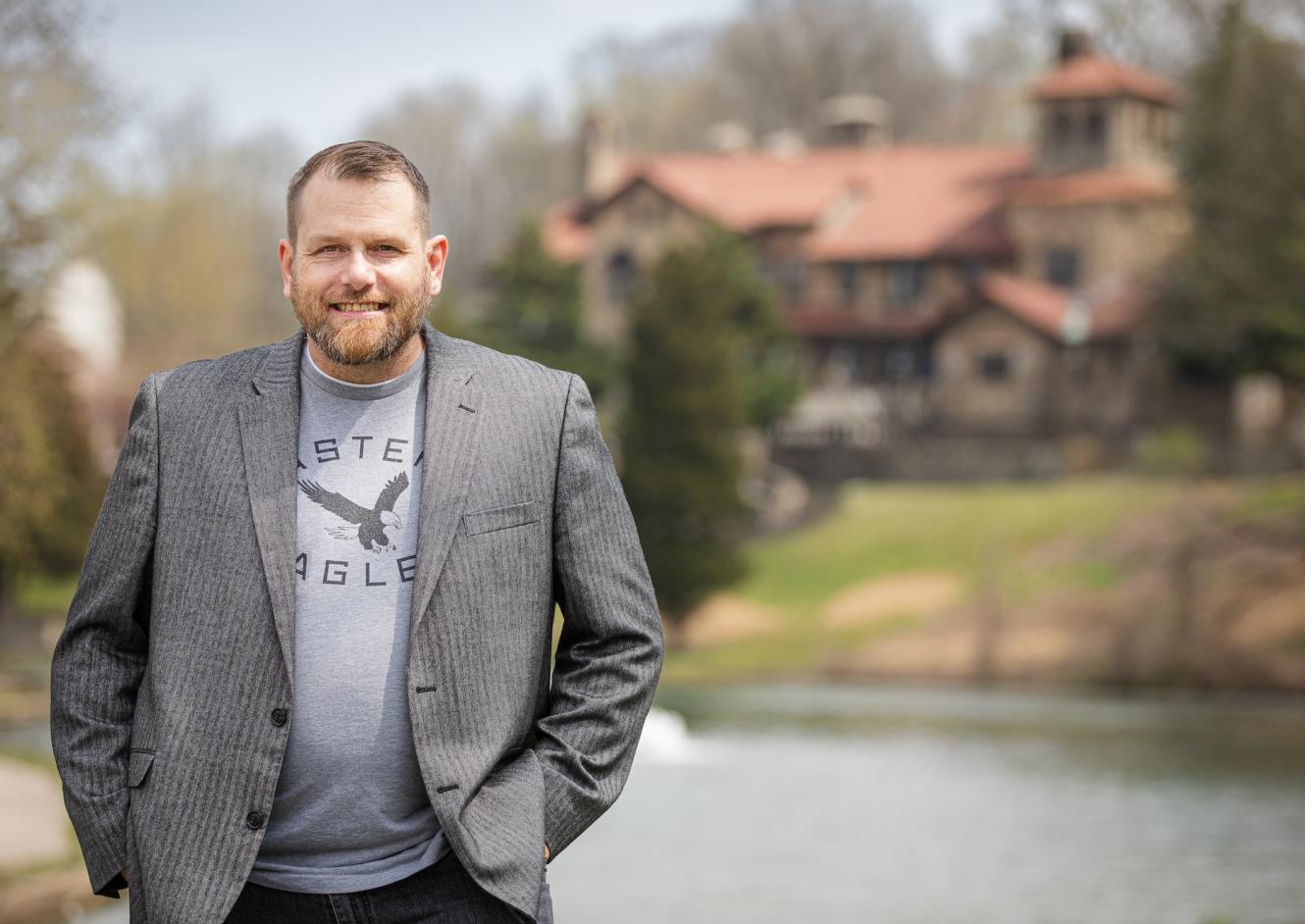How hope can help break down barriers.

In 2008, David Garlock ’17 found himself in a hopeless situation. He had served over 8 years of a 25 year sentence in prison, alongside his brother, for taking the life of their abuser after many years of abuse.
A client of the Equal Justice Initiative, David found himself in conversation with Bryan Stevenson ’81, PhD ’99 (HD). Bryan gave David hope for his future and encouraged him to apply to Eastern University to start fresh. David was inspired to consider how his passion for educating the next generation on rehabilitation could lead to advocacy for an effective and equitable justice system. In 2014, David’s parole was moved from Alabama to Pennsylvania, and his journey at Eastern began.
In his second week of classes, David shared his testimony with The Waltonian – a risk, but one he was willing to take. David was surprised at the reactions he received – he didn’t find himself treated as a “token” student, or find himself shunned, but rather, David experienced love and
knew that he was seen for who he was and the potential he had. While on campus, David studied Urban Studies with a focus in criminal justice and social welfare, and continued cementing his legacy by devoting himself to Eastern’s Prison Ministry: playing basketball with and mentoring incarcerated youth at the Lancaster Youth Intervention Center.
From that point on, David has been an amazing example of how the past does not define the future.
This year, David has been named Eastern’s Distinguished Young Alumnus of the Year. David Garlock is a successful returning citizen, reentry professional, and criminal justice reform advocate. He has made an impact working on campaigns to abolish death by incarceration, create geriatric parole programs, and reinstitute Pell Grant funding for incarcerated students. He serves as a board member for the National Association for Rational Sex Offense Laws, the Pennsylvania Association for Rational Sex Offense Laws, the Pennsylvania Reentry Council, and the Eastern University Prison Education Program.
A few years after graduating, David was speaking at another university when one of the men in the back of the class spoke up and recalled when he heard David speak at the Lancaster Youth Intervention Center as an Eastern student. This conversation revealed the flame for reform that had been ignited in that young man’s life, carrying forward David’s legacy, and even Bryan before him, of lighting the way forward for those who are marginalized and in need of hope.

